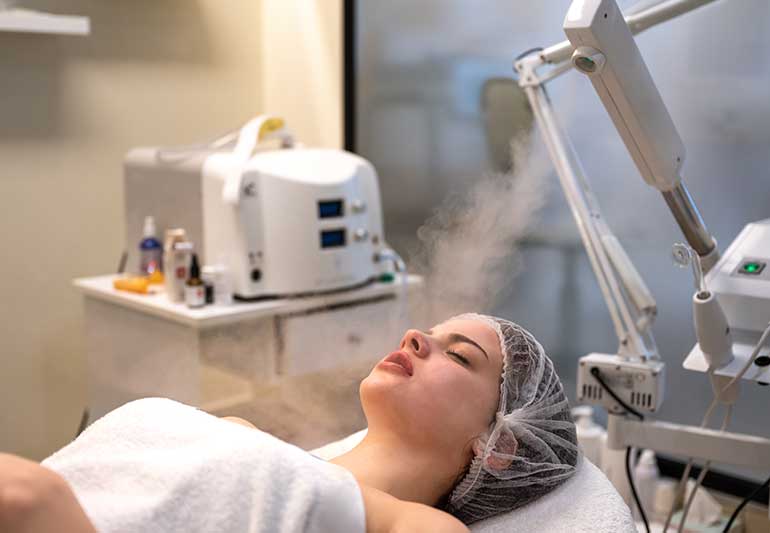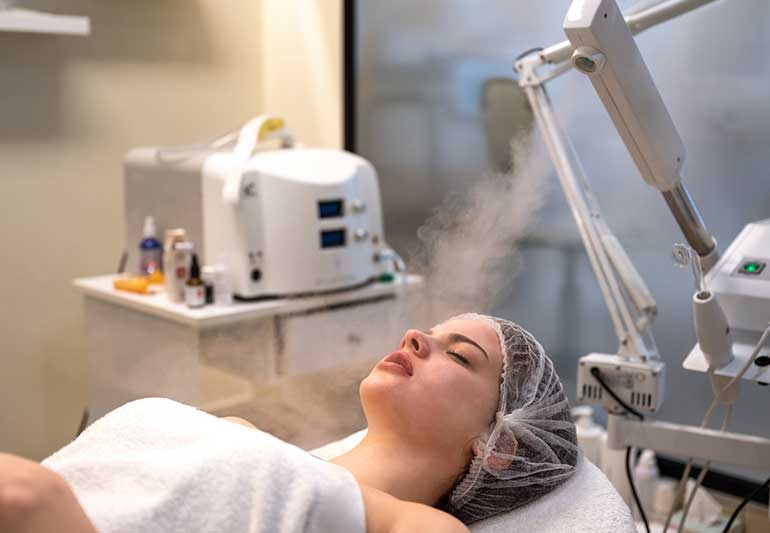Ozone therapy https://georgetownsuncryo.com/
[current_date]
ozone therapy is an alternative medical treatment that introduces ozone or ozonides to the body. The United States Food and Drug Administration (FDA) prohibits all medical uses of ozone, “In any medical condition for which there is no proof of safety and effectiveness”, stating “Ozone is a toxic gas with no known useful medical application in specific, adjunctive, or preventive therapy. In order for ozone to be effective as a germicide, it must be present in a concentration far greater than that which can be safely tolerated by man and animals

Ozone therapy has been sold as an unproven treatment for various illnesses, including cancer, a practice that has been characterized as “pure quackery“.[2] The therapy can cause serious adverse effects, including death
Proposed uses
Ozone therapy consists of the introduction of ozone into the body via various methods, usually involving its mixture with various gases and liquids before injection, with potential routes including the vagina, rectum, intramuscular (in a muscle), subcutaneously (under the skin), or intravenously (directly into veins). Ozone can also be introduced via autohemotherapy, in which blood is drawn from the patient, exposed to ozone, and re-injected into the patient.
This therapy has been proposed as a primary or adjunct therapy for various diseases, including osteoarthritis,  herniated disk, chronic wounds, hepatitis B, and C, herpes zoster, HIV-AIDS, multiple sclerosis, cancer, heart disease, Alzheimer’s dementia, and Lyme disease, though supportive evidence for some of these applications is limited. The American Cancer Society warned in 2010 that evidence for the efficacy of ozone therapy against cancer is inconclusive, and the therapy may be dangerous  For the treatment of HIV/AIDS, although ozone deactivates the viral particles outside the body, well-designed studies have shown there is no benefit for living patients. The United States Food and Drug Administration initially stated in 1976 and reiterated its position in 2006, that when inhaled, ozone is a toxic gas that has no demonstrated safe medical application, though their position statements primarily deal with its potential for causing inflammation and pulmonary edema in the lungs. They also emphasize that for ozone to be effective as a germicide, it must be present at concentrations far greater than can be safely tolerated by humans or other animals. More recent reviews have highlighted that different routes of administration may result in different therapeutic and side-effect profiles,
though a statistically robust meta-analysis of available research has not been performed to date.
Some reviews have suggested ozone as a potential treatment for herniated discs[20] and diabetic
There is some controversy about its use by athletes to increase performance despite numerous adverse side effects within the pulmonary and/or skeletal muscle systems. Although its use is not disallowed in and of itself, it can be mixed with banned substances for administration prior to injection.
Safety
Ozone therapy has potentially serious adverse effects, and as of 2012, at least five deaths had been reported due to the therapy’s use on people with cancer.[3] From 1975 to 1983 in Germany, research revealed six deaths, four cases of visual disturbance, three cases of paraplegias, four gas embolisms in the pulmonary circuit, two heart attacks, four pulmonary embolisms, two cases of apoplectic paralysis, and two cases of abnormal heart rhythm following ozone therapy. More commonly, pulmonary edema is the most prevalent adverse effect of ozone treatment. In the muscular system, many cases of tendon rupture, osteoarthritis, myositis, synovitis, joint infections, and muscle tears have been documented as results of ozone therapy. In the integumentary system, benign skin discoloration is the most common. These all occurred following direct injection of O2/O3 gas: a method now regarded as malpractice by most ozone practitioners. In each case, the clinical picture corresponded either to a gas embolism, or allergic shock. The fact that one case of apparent allergic shock followed the injection of a very small quantity of gas raises the unknown possibility that other methods of administration might also carry the risk of allergic shock.[23][24]
Much of the concern related to ozone therapy revolves around the safety of blood ozonation. When inhaled by mammals at high levels, ozone reacts with compounds in tissues lining the lungs and triggers a cascade of pathological effects, including pulmonary edema, however, ozone therapy does not usually involve inhalation of ozone gas.[19][25] It has been argued that while peroxides (a product of ozone) are naturally generated inside phagocyte cells to kill bacteria, outside the cell they can damage tissue.[26] Proponents suggest that its effects are tissue-dependent, though the subject is still debated.[19][27]
Other serious incidents reported include transmission of hepatitis C,[28] and one case of a heart attack following some hours after autohemotherapy.[29]
Ozone-based treatments can be associated with central nervous system toxicity, termed Ozone-Induced Encephalopathy (OIE).[30]Â OIE may include cortical visual impairment, altered mental status, headache, focal neurological deficits, seizures, dizziness, nausea, and vomiting, regardless of the route of administration. OIE should be considered in patients presenting with neurological symptoms in close relation to Ozone Therapy.
Regulation and ethics
The FDA prohibits the medical use of ozone, “In any medical condition for which there is no proof of safety and effectiveness”, stating “Ozone is a toxic gas with no known useful medical application in specific, adjunctive, or preventive therapy. In order for ozone to be effective as a germicide, it must be present in a concentration far greater than that which can be safely tolerated by man and animals.”[1]
Beginning in 1991 the FDA prosecuted and sent to jail several people presenting themselves as medical doctors and selling ozone therapy products as a medical cure or operating medical clinics using ozone therapy for healing human illness.[31][32] Arrests following similar activity have been made in other countries as well, including Uganda and Thailand.[33][34]
Ozone therapy is sold as an expensive alternative cancer treatment in Germany. David Gorski has described the practice as “pure quackery”.[2] Proponents of the therapy falsely claim it is a recognized therapy there, but ozone therapy is not approved by the German medical establishment.
History
In 1856, just 16 years after its discovery, ozone was first used in a healthcare setting to disinfect operating rooms and sterilize surgical instruments.[35]Â By the end of the 19th century, the use of ozone to disinfect drinking water of bacteria and viruses was well established in mainland Europe.[35][36]
In his work on bioenergetic analysis, a proponent of ozone therapy William Reich developed a device utilizing ozonides in which “…one inserted their testicular [sic]“.[37] William Reich‘s work on alternative medicine on the pseudoscientific lifeforce known as Orgone which ozone therapy was said to enhance.
In 1892 The Lancet published an article describing the administration of ozone for the treatment of tuberculosis.[38] During World War I, ozone was tested at Queen Alexandra Military Hospital in London as a possible disinfectant for wounds. The gas was applied directly to wounds for as long as 15 minutes. This resulted in damage to both bacterial cells and human tissue. Other sanitizing techniques, such as irrigation with antiseptics, were found preferable.[39][40]
